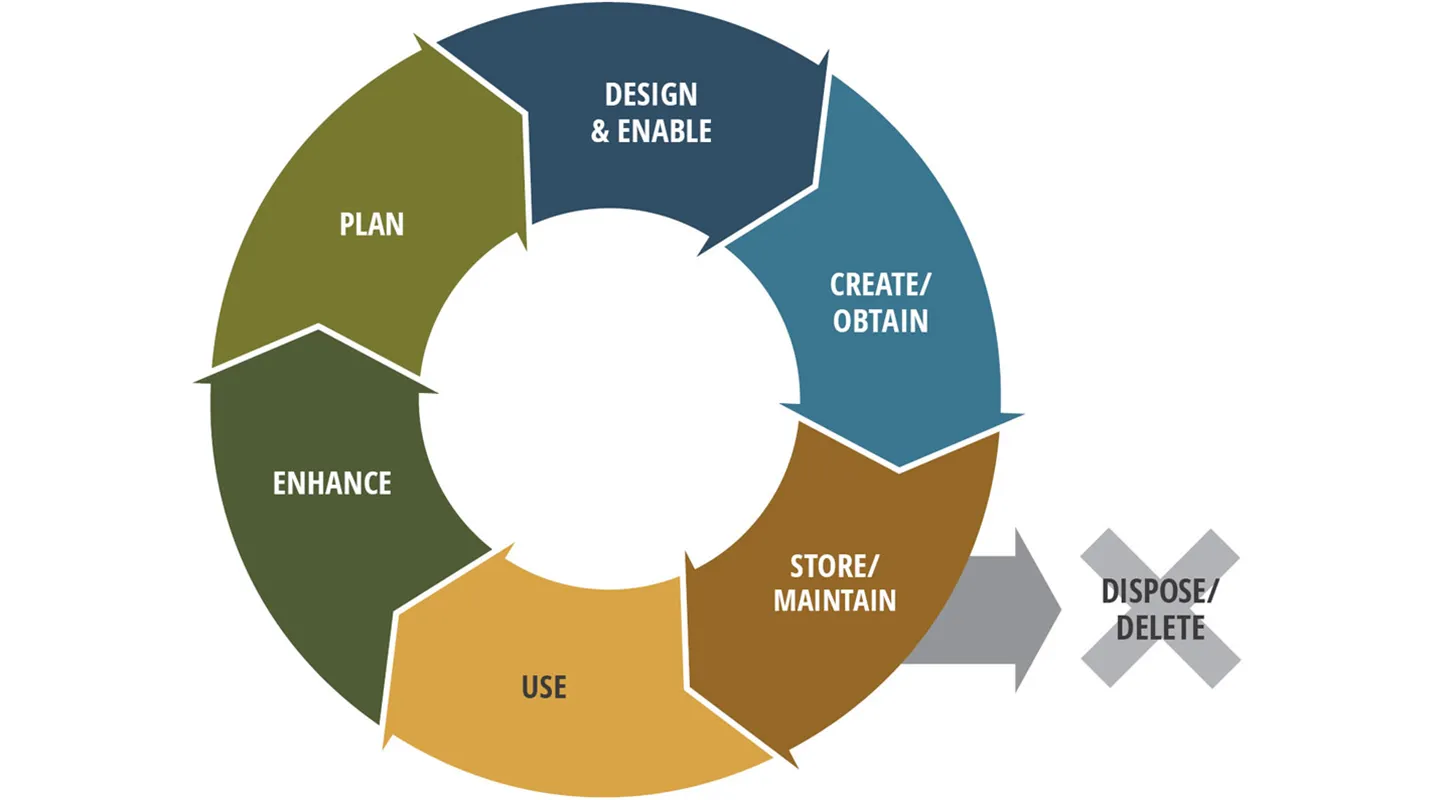An emerging trend among public- and private-sector organizations is to view and treat data as an asset. This trend is transforming the emergency management (EM) community—re-shaping how state and local agencies prepare for and respond to disasters. Data has always been critical to the effectiveness of the organizations it supports, but rather than incorporating data into the preparedness phase of the EM life cycle, it’s often an afterthought when discussing best practices to handle, store, update, and position the data to be easily accessible by those who need it most when a disaster strikes. State and local agencies are exploring how to better integrate data into EM functions by reframing data as something to focus on, deliberately plan for, and take care of.
What is Data?
Data can mean many things. In the EM community, data refers to all information needed by decision makers prior to, during, and post disaster. Data can come from websites, department or agency hard copy files or e-files, and conversations between agency leads.
Viewing data as an emergency management asset and deliberately discussing and planning for it is a proactive way to ensure emergency management agencies evolve and become more data driven at the same pace as other modern professional organizations.Paul Dean
The data needed during an emergency can be extensive, depending on the complexity and severity of the disaster. This can include data on:
- Law enforcement
- Government
- Fire services
- Search and rescue
- Community facilities
- Medical care
- Supply chain processes
- Food
- Water
- Shelter
- Agriculture
- Transportation
- Infrastructure
- Power grid
- GIS
- Population
- Weather
- Communications (911, alerts, responder and dispatch services)
- Hazardous materials
For example, if a community experiences a life-threatening heatwave, EM leaders will need access to a large amount of data from multiple organizations and agencies in order to coordinate an effective response. They’ll need data from local healthcare facilities to take inventory of equipment and supplies needed to treat heat stroke related injuries or to assess if they have an adequate number of healthcare personnel and hospital beds to treat patients. They may need to collect data from the school systems to assess if they have adequate A/C systems or transportable fans needed in classrooms. Another data point would be considering how many senior citizen centers and nursing homes are at risk of heat stroke and may need medical care. Viable state community-based facilities with A/C could be considered to shelter at-risk residents such as public libraries and sport stadiums. Transportation facility data would also be crucial such as how many busses are available to transport at-risk residents to identified community facilities.
Why is Managing Data as an Asset in the EM Community Important?
Managing data as an EM asset means understanding the types of data needed for different disasters, how it’s collected, where it’s stored, how frequently it’s updated, who can access it, and how it’s accessed. If this information is managed properly and timely, preferably through a common user-friendly and web-based entry point, decisions can be made faster. When a state or local government proactively manages their data before the disaster, it can have significant impacts on the success of responding to a disaster.
Logistically, obtaining data requires coordination between all EM stakeholders. When a disaster occurs, many EM agencies rely on one or a small team of GIS staff to handle all data needs or they rely on the data capabilities of partner organizations. Delaying this kind of coordination until emergency response functions are under way is risky and inefficient. Cataloging and understanding available data from disparate sources enables the creation of organized and centralized solutions, empowering emergency managers.
How Does a State or Local Agency Manage Data?
Many EM agencies view preparedness through the POETE Analysis. POETE is a five-element concept for agencies to examine their capabilities and determine areas of weakness.
- Planning—writing and updating emergency response plans
- Organizing—ensuring the right staff is available
- Equipping—maintaining the right equipment and materials
- Training—ensuring staff are adequately trained
- Exercising—demonstrating effective use of plans, staff, and equipment
To be effective, agencies need to incorporate data management within the equipping element of POETE and review each potential data source needed during disasters, working towards an end-product of current data which is easily accessible via a single platform. Our firm is working with states and local EM agencies to define what data is owned, how it is maintained, used, and needed in order to develop a data management plan and structure that align with EM best practices and existing data storage and use requirements.

To learn more about managing data within the EM framework, see this blog.